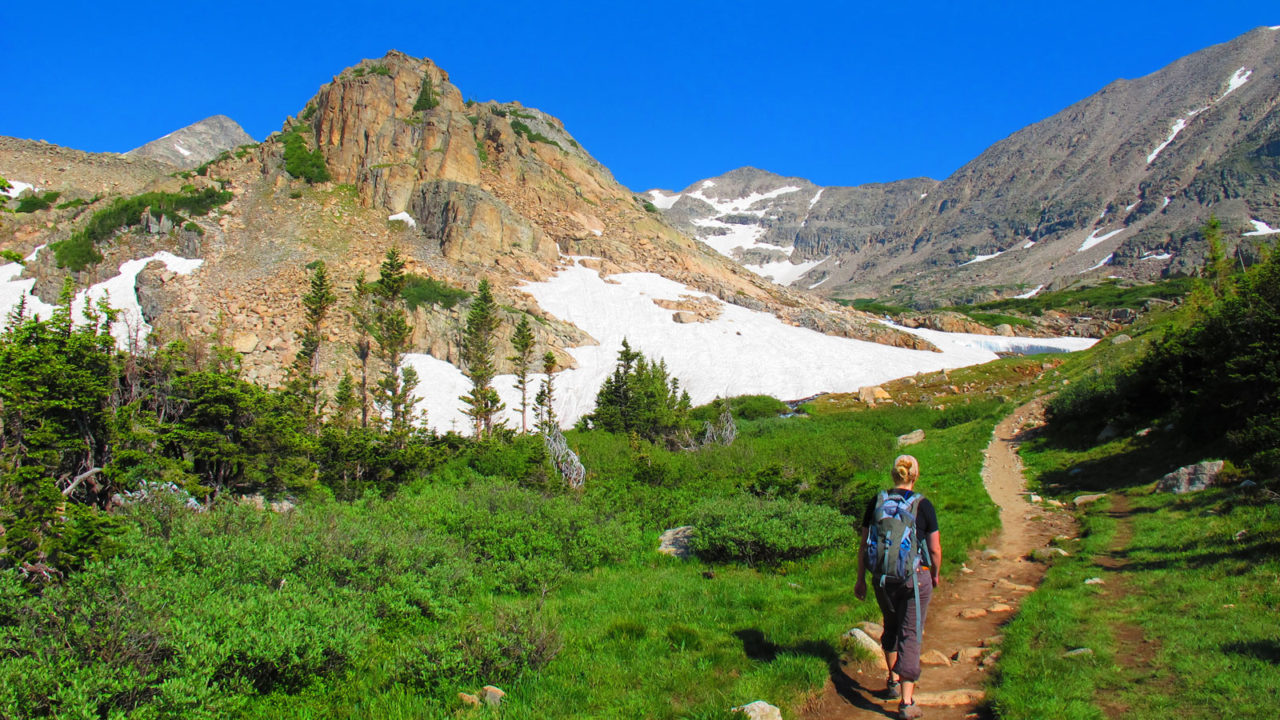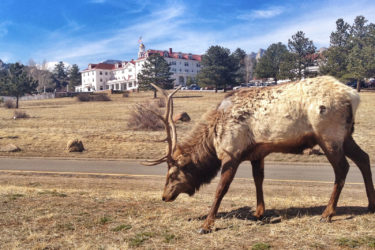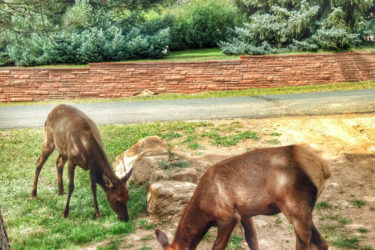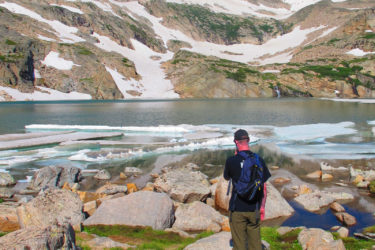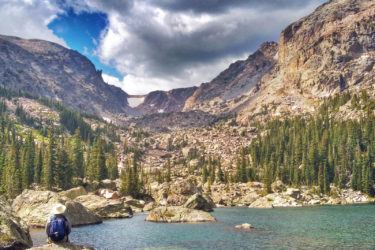10 Reasons to Visit Estes Park This Spring
Make the most of the season in Rocky Mountain National Park’s basecamp.
In Colorado’s Rocky Mountains, April showers bring May snow… and sun … and, yes, flowers too. Spring’s unpredictable weather is a boon for adventurers who toss their skis and hiking boots and mountain bikes into their cars before setting out. One of the best destinations for spring outings is Estes Park, a gem of a town located about 70 miles northwest of Denver. Considered the gateway to Rocky Mountain National Park (RMNP), Estes Park is a little quieter at this time of year—which translates to less traffic at trailheads and lower room rates for you. Here’s why you should visit now.
1. Trail Ridge Road opens.
Trail Ridge Road, the highest continuous paved road in the United States, climbs to 12,183 feet as it crosses the Continental Divide through RMNP and connects the towns of Estes Park and Grand Lake. Conditions can get pretty gnarly that high up, so the road closes at some point each fall; it generally reopens on Memorial Day weekend, depending on conditions. In the winter, the roadway is designated as a “trail” on which you can ski, snowshoe, or hike. It converts back to a “road” on April 1. Once plowed—and before it officially opens to vehicles—the 48-mile-long Trail Ridge becomes a bucket-list road ride for the fit and prepared cyclist.
2. You can spot elk calves.
“My favorite time of year is after the elk calves are born,” says wildlife photographer and Estes Park local Dawn Wilson. This usually occurs at some point in May, often around Memorial Day.
Wilson recommends Moraine Park, Beaver Meadows, or Horseshoe Park on the east side of RMNP and Kawuneeche Valley on the west side as good viewing areas. Take caution, though: Elk are understandably more aggressive at the this time of year as they want to protect their young, so, as always, keep a safe distance (at least 75 feet) and stay alert.
3. The birds come out.
Bird watchers and photographers throng to the Matthews-Reeser Bird Sanctuary on the south side of Lake Estes during their spring migration. The pristine, high-elevation habitat is home to more than 280 bird species, including hummingbirds, red-tailed hawks, flycatchers, vireos, swallows, wrens, thrushes, and warblers. Peregrine falcons call Lumpy Ridge home, so RMNP typically closes the area’s climbing routes from early March through mid-summer to protect the nesting areas; pack binoculars to spot the hatchlings.
4. Waterfalls start flowing.

Colorado’s snowpack is the lifeblood of the West. As it melts and makes its way down rivers and valleys, it creates some fine waterfalls, too. Because weather can be hard to predict and trails often still sport some snow or ice, spring is often overlooked for capturing waterfall photos. But it shouldn’t be! Wild Basin Trailhead (about 12 miles from Estes Park, on the southeastern edge of RMNP) takes hikers along a 5.4-mile, out-and-back route that passes Copeland Falls, Calypso Cascades, and Lower Copeland Falls to their final destination: 40-foot-tall Ouzel Falls.
5. Patio beers start flowing, too.
Is there a finer, post-hike reward than a cold beer on a sunny patio? Like most Colorado towns, Estes Park has no shortage of either. The two local breweries—Rock Cut Brewing Company and Lumpy Ridge Brewing Co.—both have awesome outdoor spaces. The Wheel Bar’s downtown location means its patio comes with river views. And, with 64 rotating taps, the Barrel has one of the most robust craft beer lineups you’ll find in the state. Bonus: Elkins Distilling Co. is the place to go if you’re into whisky drinks and cornhole.
6. The Estes Park Aerial Tramway gets going.
Since the Tram opened in July 1955, three million people have hitched a ride above the treetops to the summit of Prospect Mountain. The European-style cable cars—among just a handful that are operating in the United States—are open from Memorial Day until early September (9 a.m. to 6 p.m. daily) and afford one of most captivating views of the Estes Valley. Pro tip: Go in the early morning or late afternoon for fewer crowds, less wind, and better light to capture that #nofilter photo.
7. It’s still a winter wonderland—in some spots.

Old Man Winter sticks around a little longer in the high country. If you’re a “turns all year” type of backcountry skier—or a newbie!—you’ll have no trouble locating spring snow to play in. Some of the area’s most popular off-piste locales are Hidden Valley, a one-time ski area (it closed in 1991); intermediate-level Flattop Mountain; St. Vrain Mountain, with its Wild Basin views; and some serious terrain off Trail Ridge Road. (Teton Gravity Research has a great primer on backcountry skiing around Estes Park.)
8. There’s plenty to explore by foot.
Sure, trail conditions vary greatly at this time of year—aka, you’re likely to encounter some mix of ice, snow, and mud—but that’s what a good pair of waterproof hiking boots are for. (Micro-spikes can also help prevent slipping and sliding; rent them at Estes Park Mountain Shop.) Favorite spring routes include the 1.5-mile-long Gem Lake Loop for panoramic views of the Continental Divide and the dog-friendly, 3.6-mile (round trip) Kruger Rock Trail.
9. The event calendar is jam-packed.
The party in Estes Park really gets going in May with a full schedule of events for everyone from yogis to art collectors. 2019 highlights include the 20th annual Art Market (May 25 to 27), the inaugural Wellderness Festival (May 31 to June 2), Jazz Fest (June 1 and 2), and the Estes Park Marathon (June 16).
10. Golf is back in season.
Estes Park boasts two beautiful golf courses. The Estes Park 18-Hole Golf Course is more than 100 years old and features a driving range, putting green, and chipping area; it opened for the season in mid-April. If your time is limited, visit the Lake Estes 9-Hole Golf Course, which opens in mid-May. Whichever you choose, don’t let the surrounding Rocky Mountain peaks distract you from the perfect tee shot.



